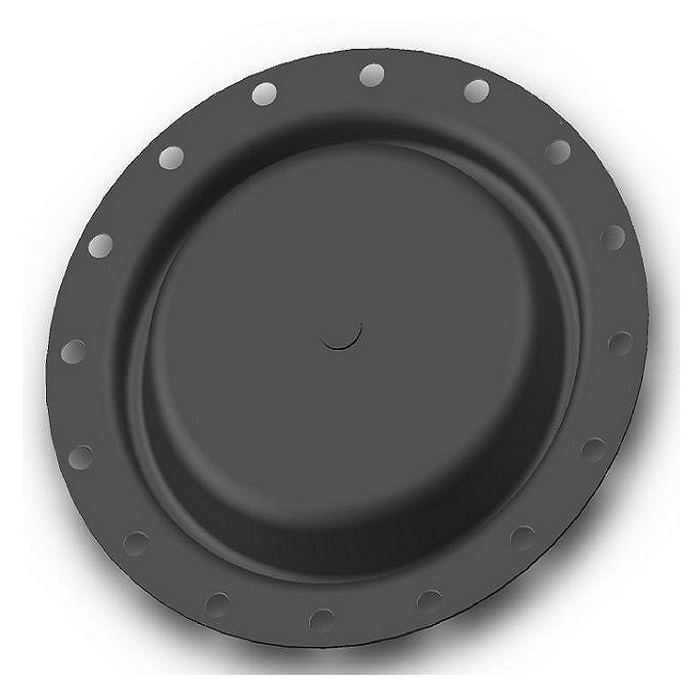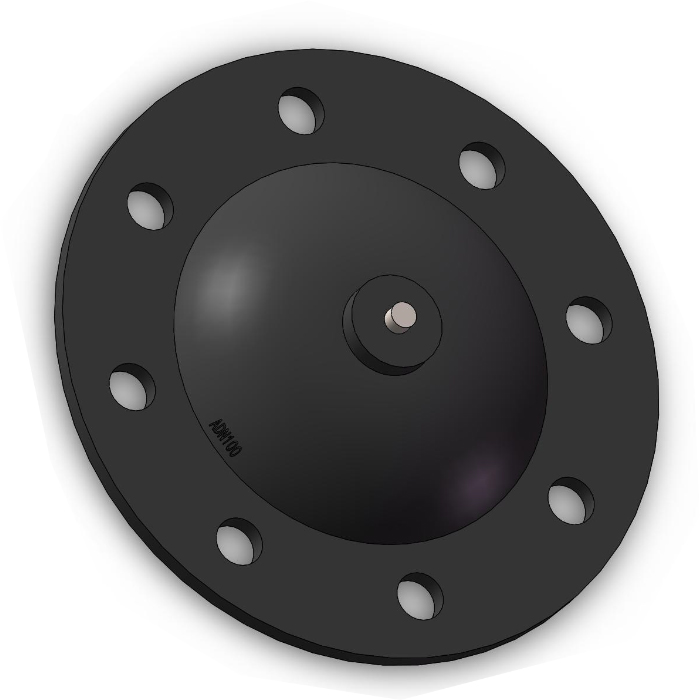We strive to maintain the highest quality standards and meet the needs of our customers. GENERAL SEALTECH LIMITED’s main business focuses on the design, development, manufacturing, and related mold development of diaphragms. We mainly produce Rubber, Rolling, LPG CNG, Teflon/PTFE, Solenoid Pulse Valve, Turbo Actor Waste gate, Diaphragm Valve pump, Gas meter, etc. They are used to seal valves for oil, air, and water or as absorbers. We also offer customized molded products that are produced based on customer samples.
Another advantage of separators is that they can provide a certain degree of protection to prevent cross contamination of substances, which is particularly important for fields such as laboratories, food, environment, healthcare, and metallurgy.

rubber diaphragm grommets is a universal and flexible sealing component that can provide variable sealing in flow control applications. The rubber diaphragms produced by GENERAL SEALTECH LIMITED are made of various single and composite elastomers, suitable for various industry applications.
The diaphragm is considered the most valuable component to meet all sealing needs, and our diaphragm seals are produced to adapt to any challenging shape and configuration, depending on your application requirements.
rubber diaphragm grommets is a flexible diaphragm, sometimes reinforced with fabric, strategically placed to prevent unnecessary transfer of material between two places by forming a seal. They can be used to separate two gases, two liquids, or one gas and one liquid that should not be mixed.
In fact, diaphragms come in various shapes and sizes. The thickness depends on the diameter and flexibility of the diaphragm
Membranes can be made of various materials, depending on the final application. Diaphragms have a wide range of applications, but are most commonly used in environments with pressure differences. The diaphragm has low fluid permeability and the ability to bend left and right, making it a sealing solution while providing consistent pressure difference.

Why choose us?
- 1We manufacture Rubber diaphragms, Rolling diaphragms, LPG CNG Diaphragms, Teflon/PTFE Diaphragms, Solenoid Pulse Valve Diaphragms, Turbo Actuator Waste gate Diaphragms, Diaphragm Valve pump Diaphragms, Gas meter Diaphragms, etc.
rubber diaphragm grommets–A Guide to Frequently Asked Questions
2.Can diaphragms be customized for specific applications?
3.Do rubber diaphragm grommets have temperature limitations, and how do they perform in extreme temperature conditions?
4.What role do rubber diaphragm grommets play in controlling fluid flow and preventing leaks in pumps and valves?
5.Can diaphragms be used in applications requiring compliance with industry standards, such as FDA, ASME, or ISO?
6.Do diaphragms require maintenance or replacement over time, and what are the signs that indicate the need for replacement?
7.How do diaphragms provide sealing solutions in hydraulic accumulators and fluid reservoirs?
8.What is the role of diaphragms in controlling the flow of aggressive or corrosive chemicals in chemical processing applications?
1.Do rubber diaphragm grommets have electrical conductivity properties, and can they be used in applications requiring EMI/RFI shielding?
No, rubber diaphragm grommets do not have electrical conductivity properties and cannot be used in applications requiring EMI/RFI shielding. Diaphragms are typically made of rubber or plastic and are used to control the flow of air or other gases.
2.Can diaphragms be customized for specific applications?
Yes, diaphragms can be customized for specific applications. Depending on the application, the diaphragm can be made from different materials, such as rubber, plastic, or metal, and can be designed to meet specific requirements.
3.Do rubber diaphragm grommets have temperature limitations, and how do they perform in extreme temperature conditions?
rubber diaphragm grommets do have temperature limitations, and their performance in extreme temperature conditions can vary depending on the material used. Generally, diaphragms are designed to operate within a temperature range of -40°F to +250°F (-40°C to +121°C). In extreme temperature conditions, the diaphragm may become brittle and crack, or the material may become too soft and lose its shape. Additionally, the diaphragm may become distorted due to thermal expansion and contraction.

4.What role do rubber diaphragm grommets play in controlling fluid flow and preventing leaks in pumps and valves?
rubber diaphragm grommets are flexible membranes that are used to control fluid flow and prevent leaks in pumps and valves. They are typically made of rubber or plastic and are designed to flex and move in response to pressure changes. When pressure is applied to one side of the diaphragm, it flexes and creates a seal that prevents fluid from leaking out. This seal is maintained until the pressure is released, allowing the diaphragm to return to its original shape and allowing the fluid to flow freely. Diaphragms are used in a variety of applications, including pumps, valves, and other fluid control systems.
5.Can diaphragms be used in applications requiring compliance with industry standards, such as FDA, ASME, or ISO?
Yes, it can be used in applications requiring compliance with industry standards, such as FDA, ASME, or ISO. However, the specific requirements of the application must be taken into consideration when selecting the appropriate diaphragm material and design.
6.Do diaphragms require maintenance or replacement over time, and what are the signs that indicate the need for replacement?
Yes, diaphragms require maintenance and replacement over time. Signs that indicate the need for replacement include a decrease in sound quality, a decrease in volume, and a decrease in the overall performance of the diaphragm. Additionally, if the diaphragm is damaged or cracked, it should be replaced immediately.

7.How do diaphragms provide sealing solutions in hydraulic accumulators and fluid reservoirs?
Diaphragms provide sealing solutions in hydraulic accumulators and fluid reservoirs by creating a barrier between the fluid and the atmosphere. This barrier prevents the fluid from leaking out and keeps the pressure inside the accumulator or reservoir at a constant level. The diaphragm also helps to reduce the amount of air that can enter the system, which helps to reduce the risk of cavitation.
8.What is the role of diaphragms in controlling the flow of aggressive or corrosive chemicals in chemical processing applications?
Diaphragms are used to control the flow of aggressive or corrosive chemicals in chemical processing applications. They act as a barrier between the chemical and the process equipment, preventing the chemical from coming into contact with the equipment and causing corrosion or other damage. Diaphragms are also used to regulate the flow of the chemical, allowing for precise control of the process.
Products Tags: rubber diaphragm

